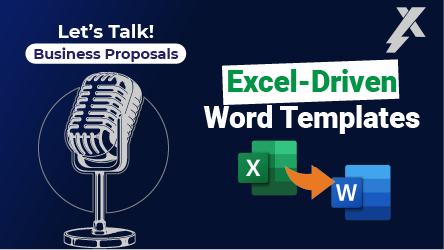The proper proposal management process is critical to a proposal writer’s success.
In this guide, you will learn what a proposal management process is, the steps to set up a process that is right for you, and some best practices to provide a complete picture for ongoing success.
What is Proposal Management?
The proposal process includes the following elements:
- Pre-RFP (Request For Proposal) Preparation by the Capture Planning Team
- Planning and Managing the Development of the Proposal/RFP Response
- Drafting and Writing the Proposal/RFP Response
Proposal management is a subset of these efforts. Proposal writers are generally not involved in any Pre-RFP activities typically handled by business development or capture planning teams. Once the RFP has been released, it is time for the proposal writers to take steps to ensure a unified effort for a successful response in a timely manner. This is where proposal management provides a framework for managing the collaborative responses solicited from multiple subject matter experts and departments such as legal, technical, marketing, compliance, security, and more.
The Necessity of Establishing a Proposal Management Process
The days of cobbling together a proposal from old proposal responses or information known only to one or two people with years of experience in a company are fast becoming an outdated and ineffective solution to creating a winning response. To avoid the embarrassment of the mistakes and lost contracts that come about with this methodology, a written proposal management process must be created and followed by all invested parties.
There are many different ways to approach proposal management, but a few basic steps are required to ensure success.
Proposal Management Process: Key Steps
- The Go/No Go Decision
Responding to an RFP is challenging and time-consuming work. The first step is to evaluate the opportunity and decide whether your company has a good competitive advantage and is positioned to win the bid. This means criteria should be defined in advance regarding the Go/No Go decision process, who will decide to proceed, and in what time frame.
- Proposal Response Planning
When the decision has been made to proceed with a response, it is time to begin formulating the plans to complete the response. This includes creating an outline of all the tasks that need to be completed, identifying the individual(s) responsible for each task, and establishing a proposal outline and timeframe for production.
- Team Kick-Off Meeting
Be sure to identify items that need to be completed before the team kick-off meeting. Also, it is easier to follow a standard agenda during the meeting while defining who will complete which section(s) and what the deadlines are for completion.
- Proposal Development
Now that you have an outline, it is clear who will write what and when. During proposal development, all tasks combine to create a cohesive document. This is when the proposal content comes together, along with the branded elements and graphics, to set your document apart from the competition. It is essential to define what methods individuals will use to collaborate on the final response document.
- Deliver the Proposal
Be sure to think about the best way to deliver the completed proposal document on time. Online portals have become increasingly common and can, at times, be challenging in their own right to navigate as the deadline to submit looms.
- Final Steps
After the proposal has been delivered, be sure you have the right plans to update your proposal content library with new responses and add any updates to resumes.
Proposal management is a big part of any business. Whether a small business or a large corporation, you must manage proposals effectively to ensure that your company gets the best value out of its resources. Be sure to include the six steps outlined in this article to gain the greatest opportunity for success.
Automation for Proposal Management
Proposal management software is an essential part of the process, and many options are available. To find the right solution for you and your team, it’s important to consider what features will be most beneficial.
Proposal management can be quite challenging for companies that submit multiple proposals for different clients.
Here are some things that a good proposal management solution must accomplish:
- Provide a central location for all pending proposals
- Make sure everyone has access to relevant information
- Enable collaboration among team members
- Reduce the risk of missing important deadlines or due dates
- Help eliminate errors in document formatting and content
- Automate common tasks such as scheduling meetings, sending emails or reminders, etc.
A proposal management software tool is an essential part of the proposal process, and it can help you streamline your efforts and improve your workflow. It can also help you save time and money and enhance client communication.
That’s where Expedience Software comes in. Proposal Manager brings proposal process management directly to Microsoft Word. Proposal Manager allows you to flag incoming RFPs with critical elements to capture requirements, guide bid/no-bid decisions, submission instructions, clarification questions, assignments, and more. We offer automation software for proposal management that makes the process easier and more efficient. Please contact us if you found any part of this guide useful or interesting or would like to learn more about our proposal management solutions.






